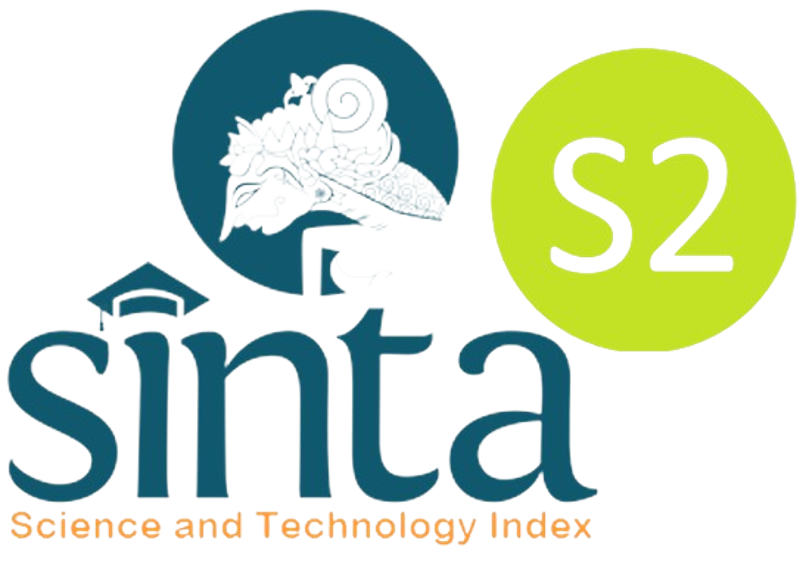Development of Learning Media Based on Mobil Learning Application
Abstract
Abstract: Development of mobile learning application-based media. Objectives: The purpose of this study is to develop a more dynamic learning media by utilizing technology in the form of applications on smartphone devices to improve student learning outcomes. Methods: This study uses research and development methods with data collection techniques in the form of questionnaires, feasibility tests and effectiveness of mobile learning applications developed as learning media through stages designed according to the ADDHIE model. Findings: Product development in the form of mobile learning applications is feasible as a learning medium and effective for improving student learning outcomes with an increase in the average value of 28 students from 57.32 to 81.43. Conclusion: Mobile learning application is a good choice as a learning media.
Keywords: Learning media, mobile learning application, research and development
Abstrak: Pengembangan media pembelajaran berbasis aplikasi mobile learning. Tujuan: Penelitian ini bertujuan untuk mengembangkan media pembelajaran yang lebih dinamis dengan memanfaatkan teknologi dalam bentuk aplikasi pada perangkat smartphone untuk meningkatkan hasil belajar siswa. Metode: penelitian ini menggunakan metode penelitian dan pengembangan dengan teknik pengumpulan data dalam bentuk kuesioner, tes kelayakan dan efektivitasi aplikasi pembelajaran mobile yang dikembangkan sebagai media pembelajaran melalui tahapan yang dirancang sesuai dengan model ADDHIE. Temuan: Pengembangan produk dalam bentuk aplikasi pembelajaran mobile layak sebagai media pembelajaran dan efektif untuk meningkatkan hasil belajar siswa dengan peningkatan nilai rata-rata 28 siswa dari 57,32 menjadi 81,43. Kesimpulan: Aplikasi pembelajar mobile merupakan pilihan yang baik sebagai media pembelajaran.
Kata kunci: Media pembelajaran, aplikasi pembelajaran mobile, penelitian pengembangan
Full Text:
PDFReferences
Ally, Mohamed. (2009). Mobile Learning Transforming the Delivery of Education and Training. Atabasca University: AU Press.
Arsyad. 2002. Media Pembelajaran, Jakarta: Rajawali Pers.
Asabere, Nana Yaw 2013. Benefits and Challenges of Mobile Learning Implementation: Story of Developing Nations. International Journal of Computer Application, Vol. 73(1): (0975-8887)
Bilandzic, M., & Foth, M. (2014). Learning beyond books—strategies for ambient media to improve libraries and collaboration spaces as interfaces for social learning. Multimedia tools and applications, 71(1), 77-95.
Cheng, X., Su, L., & Zarifis, A. (2019). Designing a talents training model for cross-border e-commerce: a mixed approach of problem-based learning with social media. Electronic Commerce Research, 1-22.
Chuang, H. H. (2016). Leveraging CRT awareness in creating web-based projects through use of online collaborative learning for pre-service teachers. Educational Technology Research and Development, 64(4), 857-876.
Dick & Carey. 2001. The Systematic Desaign of Intruction. Addison-Wesley Educational Publiser Inc.
Du, J., Zhang, Y., Luo, J., Jia, Y., Wei, Q., Tao, C., & Xu, H. (2018). Extracting psychiatric stressors for suicide from social media using deep learning. BMC medical informatics and decision making, 18(2), 43.
Jiang, S., Song, X., & Huang, Q. (2014). Relative image similarity learning with contextual information for Internet cross-media retrieval. Multimedia systems, 20(6), 645-657.
Kim, K. R., & Moon, N. M. (2013). Designing a social learning content management system based on learning objects. Multimedia tools and applications, 64(2), 423-437.
Kleinberger, T., Holzinger, A., & Müller, P. (2008). Adaptive multimedia presentations enabling universal access in technology enhanced situational learning. Universal access in the information society, 7(4), 223-245.
Konate, A., & Du, R. (2018). Sentiment analysis of code-mixed Bambara-French social media text using deep learning techniques. Wuhan University Journal of Natural Sciences, 23(3), 237-243.
Lee, H., Seo, H., Lee, N., & Song, M. (2018). Exploring a Supervised Learning Based Social Media Business Sentiment Index. In Proceedings of the 7th International Conference on Emerging Databases (pp. 193-202).
McClune, B., & Jarman, R. (2011). From aspiration to action: A learning intentions model to promote critical engagement with science in the print-based media. Research in Science Education, 41(5), 691-710.
Popescu, E. (2014). Providing collaborative learning support with social media in an integrated environment. World Wide Web, 17(2), 199-212.
Rahman, A. S. M. M., & El Saddik, A. (2013). Mobile PointMe-based spatial haptic interaction with annotated media for learning purposes. Multimedia systems, 19(2), 131-149.
Smaldino, , et al. (2005). Instructional Technology and Media for Learning (eighth ed.). Ohio: Merril Prantice Hall.
Song, L., Lau, R. Y. K., Kwok, R. C. W., Mirkovski, K., & Dou, W. (2017). Who are the spoilers in social media marketing? Incremental learning of latent semantics for social spam detection. Electronic commerce research, 17(1), 51-81.
Tian, F., Liu, X., Liu, Z., Sun, N., Wang, M., Wang, H., & Zhang, F. (2019). Multimedia integrated annotation based on common space learning. Multimedia Tools and Applications, 78(1), 437-456.
Zhang, H., Dai, G., Tang, D., & Xu, X. (2018). Cross-media retrieval based on semi-supervised regularization and correlation learning. Multimedia Tools and Applications, 77(17), 22455-22473.
Zhang, H., Gao, X., Wu, P., & Xu, X. (2016). A cross-media distance metric learning framework based on multi-view correlation mining and matching. World Wide Web, 19(2), 181-197.
Zhao, H., Wang, J., Wang, Q., & Liu, F. (2019). Queue-based and learning-based dynamic resources allocation for virtual streaming media server cluster of multi-version VoD system. Multimedia Tools and Applications, 1-26.
Zhou, Z., Shin, J., Feng, R., Hurst, R. T., Kendall, C. B., & Liang, J. (2019). Integrating Active Learning and Transfer Learning for Carotid Intima-Media Thickness Video Interpretation. Journal of digital imaging, 32(2), 290-299.
Zhou, Z., Shin, J., Feng, R., Hurst, R. T., Kendall, C. B., & Liang, J. (2019). Integrating Active Learning and Transfer Learning for Carotid Intima-Media Thickness Video Interpretation. Journal of digital imaging, 32(2), 290-299.
Zhou, Z., Shin, J., Feng, R., Hurst, R. T., Kendall, C. B., & Liang, J. (2019). Integrating Active Learning and Transfer Learning for Carotid Intima-Media Thickness Video Interpretation. Journal of digital imaging, 32(2), 290-299.
Refbacks
- There are currently no refbacks.
Copyright (c) 2019 Jurnal Pendidikan Progresif

This work is licensed under a Creative Commons Attribution-ShareAlike 4.0 International License.
View My Stats

The copyright is reserved to The Jurnal Pendidikan Progresif that is licensed under a Creative Commons Attribution-ShareAlike 4.0 International License.





